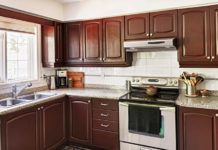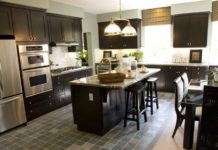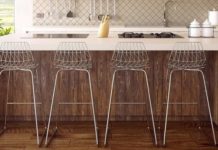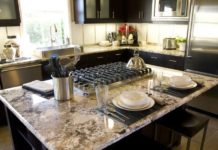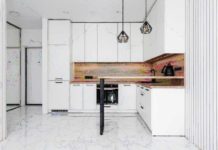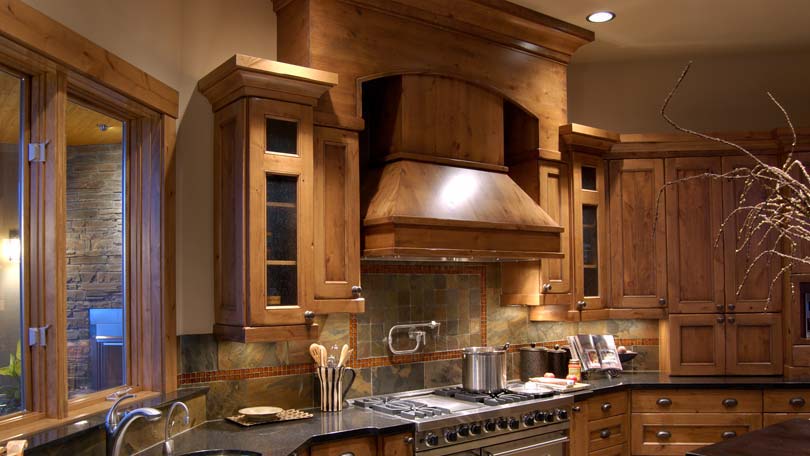
Whether you’re planning a new kitchen or doing what you can to improve an existing one, you can achieve a lot simply by creating a focal point for your kitchen
There are many ways that you can do this, both decoratively and by design. For example, you might want a display of old plates or a collection of antique gadgets to be the focal point, or you might prefer to focus on a space within the room where you and your family will eat or relax.
Creating a focal point by design will usually involve creating a main area of interest, for example a table for meals, a central island with a hob or sink or simply just a working surface, or perhaps open shelving where you can display neatly packed groceries, homemade jams and pickles (even bought jams and pickles decanted into glass jars), or attractive herbs and spices. Even a good-looking hob, or multi-function cooking arrangement along one of the walls can become an interesting focal point.
If you are planning a new kitchen, take this into consideration when you decide on layout. There will always be more than one option and you will need to be imaginative to a certain extent.
If you already have the design, and you don’t intend to do any remodeling, there are many ways that you can achieve visual impact decoratively. Dramatic displays and collections work particularly well, but you might also consider a hand-painted mural on one of the walls (if you have creative skills), herbs in pots on a window sill, dried herbs hung from a beam, or even some type of arrangement on a counter top or table.
Always remember that the main aim, when creating a focal point for your kitchen, is to draw attention to that specific space or area. Conversely, you could also think of it as drawing the eye away from less attractive features that we all have to live with, in the kitchen, like sinks and appliances we can’t hide away.
Color can be a great aid too, particularly when it comes to highlighting certain areas. For instance, you might consider painting one wall a different color, or even painting cabinet doors to make them stand out from white or pale-hued walls.
Before you decide what to draw attention to, determine and then consider what you have to work with, and what your needs are. There’s no point in taking up space with a table if your family eats in a dining room or living room and not in the kitchen. But if you spend a lot of time in the kitchen, cooking, and you enjoy having people around you while you do so, then you might want to create an area that will become the hub of the home. Many people do this by including a bar-height counter with stools where people can sit, and it’s very easy for this to become the focal point.
If you have an existing kitchen, take stock and see if you can imagine how you can improve what it looks like. What do you notice first when you walk into the room? What attracts the eye? Is there a view from a window that you could make better use of? Are there walls that you could paint or decorate?
Unfortunately, because of their very nature, kitchens are not easy to reorganize easily or quickly, and not without remodeling built-in units. But even a splash of paint, or new hardware, can help improve the look and focus of the room as a whole.
A window can easily become the focal point, even if it doesn’t present a wonderful view. See how you can improve the window coverings to give some visual impact, perhaps with a classy blind or characterful café curtains. If privacy isn’t an issue, you might like the idea of fixing glass shelves across the window and using them to display pots of easy-to-grow herbs like parsley, thyme, marjoram and sweet basil. Not only will you be creating a focal point for your kitchen, but you will also be providing a source of instant flavor for the cook in your house, be it you or someone else.
Furniture can also be visually appealing, and if you have the space for a Welsh dresser or something similar, you will instantly have a focal point. Then you can use the dresser to display just about anything you wish, while using it for valuable storage as well.
If the idea of displaying items appeals to you, have a look to see what you already have. If you have three or four different versions of a particular item, you are already on your way to developing a collection. Plates are a perfect example, either hand-painted ceramic, stenciled enamel, or antique (or at very least old and interesting). Look for uniformity in terms of either color or type, and group them together, or hang around the room below the cornice of the ceiling. There’s nothing to stop you from using them if you need to! Botanical prints or other pictures can also work well if displayed in a group.
Other ideas for collections that could be made into a focal point include old tins, wicker baskets, old farm or household implements (old carpet beaters are great and they are easily mounted on the wall), cast iron or copper pots, and either good-looking stainless steel, or if you can find them, a mix of old and new wooden utensils. Scales, either the standing or hanging sort, are also highly collectable, particularly old metal scales made of cast iron and brass.
Even streamlined minimalistic kitchens can have a focal point, but it’s up to you to decide what this will be and how you will draw attention to it.
To prevent plain or ugly areas from becoming a focal point, keep these areas clean and tidy and don’t draw attention to them with decorative items of any sort.

